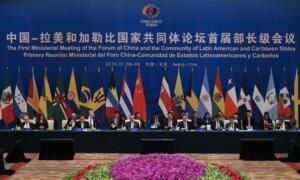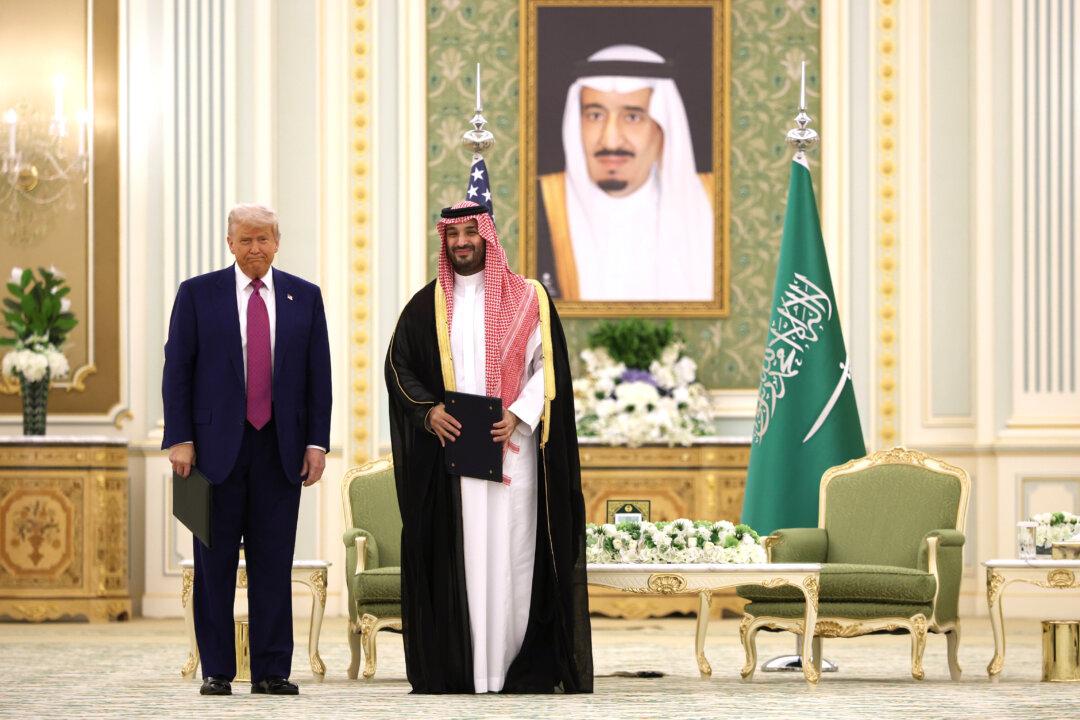Communist China is moving to strengthen its ties with Latin America, inking several new diplomatic and economic agreements with nations there in recent weeks.
Speaking at a forum for Chinese and Latin American leaders in Beijing earlier this month, Chinese Communist Party (CCP) leader Xi Jinping said his regime stood ready to “join hands” with Latin America through political, economic, and security exchanges.
In a thinly veiled swipe at current U.S. trade policy, Xi said that there were “no winners in tariff wars or trade wars” and sought to position trade with China as a key means of diversifying supply chains away from the United States.
To that end, Xi promised to “stand united” with Latin American nations, pledging to boost imports, encourage Chinese companies to increase their investments there, and expand cooperation on clean energy, 5G communications, and artificial intelligence.
CCP Offers Billions in New Credit
Key to Xi’s efforts was the announcement of a new, $9.2 billion line of credit to support infrastructure investment in Latin American and Caribbean nations.While the funding package is smaller than similar initiatives in recent years due to China’s own slowing economy, the move nevertheless represents a major push toward expanding the CCP’s influence throughout the region via financial ties.
Notably, the credit line will be denominated exclusively in Chinese yuan, thereby encouraging Latin American nations to diversify their debts away from the U.S. dollar.
Just days after the announcement of the credit line, Colombia’s government also announced it had applied to join the China-based New Development Bank, as the nation seeks ways to balance losses from cuts to U.S. foreign aid.
Colombian President Gustavo Petro said that he was excited by the possibility that the bank might finance a new 75-mile canal connecting Colombia’s Atlantic and Pacific Ocean coastlines, which he said could position the country at the “heart” of trade between South America and Asia, and provide an alternative shipping line to the Panama Canal.
The New Development Bank was established a decade ago as a project of Brazil, Russia, India, China, and South Africa, the so-called BRICS nations, and intended to counter U.S. dollar-led institutions like the World Bank and Inter-American Development Bank.
Belt and Road Expansion
Petro also signed a formal agreement with Xi, bringing Colombia into China’s Belt and Road Initiative (BRI, also known as One Belt, One Road), a global infrastructure project that U.S. officials have said traps smaller countries in debt to the CCP.Colombia’s entry means that there are now 23 Latin American and Caribbean nations participating in the BRI.
The others include Antigua and Barbuda, Argentina, Barbados, Bolivia, Chile, Costa Rica, Cuba, Dominica, the Dominican Republic, Ecuador, El Salvador, Grenada, Guyana, Honduras, Jamaica, Nicaragua, Panama, Peru, Suriname, Trinidad and Tobago, Uruguay, and Venezuela.
Colombian Foreign Minister Laura Sarabia said that the decision to join the BRI was the Latin American nation’s “boldest step in decades.”
China is Colombia’s second-largest trading partner after the United States, and recently overtook the United States as Colombia’s largest source of imports.
Visa-Free Travel and Scholarships
The CCP is also moving to increase cultural contacts with Latin American nations and has announced that citizens of Brazil, Argentina, Chile, Peru, and Uruguay will be allowed to travel to China without a visa.Visa-free travel for those nations for trips lasting less than 30 days will begin on June 1 and last for one year, China’s foreign ministry announced on May 15.
The move is the latest in a series of similar initiatives with other Asian and European countries, through which the CCP has sought to reignite its slowing economy and increase its cultural capital abroad.
Over the next three years, Beijing also plans to invite 300 members from Latin American political parties to China.
Economic Expansion
The sweeping new initiatives all come amid a backdrop of rapidly increasing trade between China and Latin American nations.Even as Chinese exports to the United States have plummeted due to tariffs, the CCP has more than made up the difference with its vastly growing trade networks across other parts of the globe, including in Latin America.
Similarly, exports to India increased by 16 percent, those to Africa increased by 15 percent, and those to the Association of Southeast Asian Nations increased by 11.5 percent.







